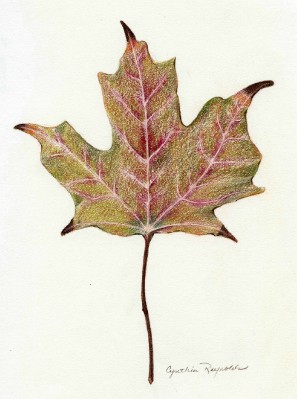



|
|
|
|
Nature Journaling Writing Examples
 Nature Journaling entries are observations about nature. Scientists use
journals for recording detailed observations about their subject. The Nature
Journal is a place to combine observation with feelings about nature.
There are a number of short poetic forms that come naturally while you
are writing down your observations, such as List poems,
Word poems, Haiku,
Cinquain and Fibs.
Begin with a list of observations and see what happens by the time you
get to the end – you may find a poem just happens!
List Poem
A descriptive poem of any length. The rhyme at end is optional:
|
|
| |
|
Heron Blue sky,
White heron,
Long neck,
Wide wing.
Do you sing?
|
The Shark Tank Flexible,
Graceful,
Beautiful,
Silver.
As long as you are outside!
|
Black Crowned Night Heron
Blue gray with white feathers,
Long feather on head like a punk rocker,
Yellow legs,
Sits on a log at the edge of a waterfall,
Oblivious to the rush of water around him.
Or perhaps quite aware
And waiting for a fish to come his way
Powered by nature’s conveyer belt. |
| |
|
Word Poem
(also called Name Poem or Acrostic Poem)
Non-rhyming descriptive poem – spell the name of the object vertically
on the page – each line begins with one of the letters in the word – try
to describe the object in the limited amount of lines.
Mounds of bright green
On the ground around a tree
Shaped like little stars
So soft

Haiku
A Japanese nature poem, 3 lines, 17 syllables or less, usually 5-7-5
Chipmunk
Small brown white-striped quick
Darts into the garden pots
Stealing my berries
Cinquain
(Non-rhyming, 5 line poem, 2- 4- 6- 8- 2 syllables. The first line
should be the title or where possible, the subject of your observation.)
Foxglove.
Tall, graceful wands
Spiked with pink and white tubes;
Each long flower hides a secret
Poison.
Fib

New poetic form based on Fibonacci sequence – a mathematical
progression that sequences by adding the previous two numbers,
(0,1,1,2,3,5,8,13, etc.). Fibonacci sequences are found in nature as
whorls or spirals. Examples are snail shells, the arrangement of seeds in
the center of a sunflower, pine cone seeds, leaves on artichokes, etc. The
poetic form is six lines using 20 syllables in form 1- 1- 2- 3- 5- 8.
Pine Cone
Brown,
Long,
Spirals,
Slightly curve --
Scales hide secret seeds
That hope some day to be a tree.
|


